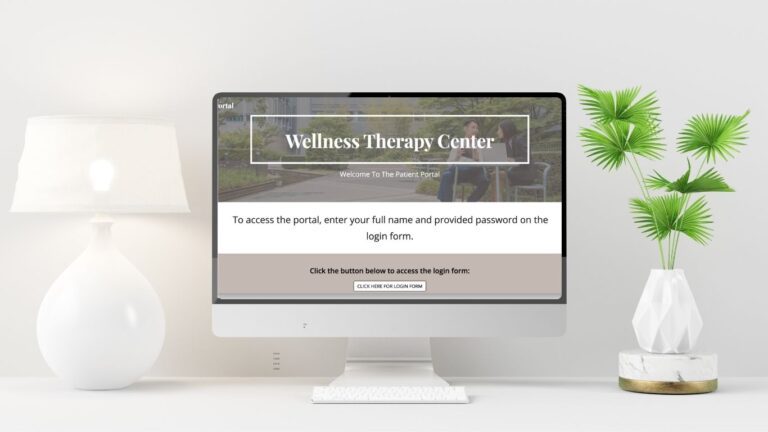Proven Strategies To Improve Client Attendance And Practice Efficiency
One of the most frustrating aspects of running a private therapy practice is dealing with no-shows and last-minute cancellations. These disruptions don’t just create unexpected gaps in your schedule—they can also impact your income, create logistical challenges and throw off the flow of your day.
I’ve been there myself, and through years of trial and error, I’ve learned that there are several things you can do to prevent no-shows. Having policies and a system for reminders in place helps tremendously in this regard. However it’s just as important to create a practice culture where clients value their appointments, understand your boundaries and have the tools to stick to their commitments. These are the key factors that come together to prevent no-shows and last minute cancellations.
In this post, I’ll walk you through the strategies that have worked for me, including how leveraging tools like Google Workspace and Square has been a game-changer. Whether you’re a new therapist or a seasoned practitioner, these tips can help you create a smoother, more sustainable practice.
Why Do Clients No-Show or Cancel?
Before diving into the solutions, let’s take a moment to understand why no-shows and cancellations happen in the first place. Addressing these root causes is key to finding effective solutions.
Here are some of the most common reasons that clients don’t show:
- Anxiety or Fear: Starting therapy can feel intimidating. Clients embarking on psychological counseling may avoid sessions because they’re nervous about facing difficult emotions.
- Forgetfulness: Life gets busy and without reminders and appointments can easily slip through the cracks.
- Lack of Consequences: Without clear policies, clients might not fully understand the impact of missing a session on their progress—or your practice.
- Life Circumstances: Emergencies, illness, or work obligations are inevitable and can lead to cancellations.
- Underlying Clinical Issues: For some clients, avoidance is part of the very problem they’re seeking therapy for.
Understanding these factors helps you address the problem with compassion while implementing systems to minimize disruptions.
Proactive Strategies to Reduce No-Shows
The best way to deal with no-shows is to prevent them from happening in the first place. Here are some proven strategies:
1. Establish Clear Policies From the Start
Policies set the foundation for how your practice runs. When clients know what to expect and understand the consequences of missing an appointment, they’re more likely to show up consistently.
- Communicate Early: During the initial consultation, explain your cancellation and no-show policies clearly. Let clients know about fees for missed sessions and how much notice you require for cancellations.
- Put It in Writing: Include your policies in your intake paperwork. If you use Google Workspace, this can be easily done with Google Forms. Create a professional, branded intake form that outlines your policies, and send it via Gmail. Clients can fill out and submit the forms online, streamlining the process. If you want to learn more about which intake forms are essential in private practice, read my post here.
- Review in Session: During the first session, take time to review your policies verbally. This ensures clients fully understand and reinforces the importance of respecting your time. If you use digital intake forms, you might consider printing a hard copy of the policy for the client so they have it in writing to keep.
- Keep a Credit Card on File: Having a card on file reinforces the value of your time and encourages clients to commit to their scheduled sessions. When clients know their card will be charged for missed appointments or late cancellations, they’re more likely to prioritize their therapy sessions. This creates a sense of accountability and respect for your schedule. With a card on file, you can easily enforce your cancellation policy without awkward conversations or delays in collecting fees. This reduces administrative burdens and ensures you’re compensated for your time. If you decide to go this route, just make sure you obtain consent to keep the card on file as part of your intake forms.
- Collect Payment in Advance:. If you do not want to keep a credit card on file, consider requiring payment upfront or in advance of the session to avoid late or non-payment issues. If this is your policy, clearly state it in your intake paperwork. If you still decide you prefer to bill after the session, you might consider stating in your policy that after two late payments or even one missed payment, you will require payment prior to the session in order to continue services.
2. Automate Appointment Reminders
A simple reminder can go a long way in reducing no-shows.
- Use Square’s Free Scheduling and Reminder Features: I use Square for my billing and payment processing. Square offers so many great features for therapists in private practice and it is HIPAA compliant. One of the features I love and use is Square’s free appointment scheduling tool. It includes automatic text and email reminders for your clients. When I started using these tools, it was transformative for my practice. Since implementing them, no-shows have become a rare occurrence for me. If you want to learn more about using Square for credit card processing, read my blog post here.
- Customize Reminders: Make your reminders friendly and professional. You can include information about your cancellation policy or links to reschedule if needed.
- Google Calendar Notifications: If you would rather use Google Calendar to schedule your appointments, you can do so by creating an event in your Google Calendar with the session details. Then in the “Add guests” field, enter your client’s email address. This will send them an invitation with the appointment details. Google Calendar automatically sends an email notification when you invite someone to an event. Additionally, clients can choose to receive reminders based on their own Google Calendar settings. You can configure reminders for the event in the “Notification” section of the event details. This ensures that both you and your client receive reminders (e.g., 24 hours before, 1 hour before, etc.).
3. Cultivate Commitment During Onboarding
Clients who feel invested in their therapy are more likely to stick to their appointments.
- Screen for Readiness: During the intake process, ask thoughtful questions to gauge a client’s readiness for therapy. Share insights about the therapeutic process to help them understand what’s involved.
- Offer Flexibility: While maintaining a consistent schedule is ideal, offering telehealth options can accommodate clients with demanding schedules or transportation challenges.
- Dissuade Non-Committed Clients: One way to deter clients who may not be fully committed to the therapeutic process is by requiring a credit card be kept on file. This ensures that your practice is filled with clients who value their sessions and are motivated to attend regularly.
How Google Workspace Can Help Reduce No-Shows
When it comes to running an efficient, affordable private practice, Google Workspace is one of the most versatile tools out there. Here’s how it can specifically help reduce no-shows:
- Streamlined Intake Process: With Google Forms, you can create customizable intake paperwork that includes your policies, payment information and consent forms. These forms can be shared via Gmail and filled out online, making the onboarding process smooth and efficient. When clients are taken through a professional onboarding process, made aware of your policies and agree to them before therapy begins, they are more likely to attend sessions regularly.
- Automated Follow-Ups: Use Google Calendar to send automated appointment invitations and reminders. Set up notifications in the event details.
- Centralized Client Communication: Gmail allows you to keep all client communication in one place, making it easier to follow up on missed appointments or send rescheduling links.
By integrating Google Workspace into your practice, you can reduce administrative burdens while enhancing communication and client accountability.
Reactive Strategies for No-Shows and Cancellations
Even with the best systems in place, occasional no-shows will happen. Here’s how to handle them professionally:
1. Enforce Your Policies
Consistency is key when it comes to enforcing your cancellation policy.
- Charge for Missed Sessions: If a client misses a session without sufficient notice, charge the agreed-upon fee. This reinforces the value of your time and encourages accountability.
- Be Fair but Firm: While emergencies happen, you want to avoid making exceptions that could undermine your policies, particularly if a client exhibits a pattern of frequent cancelling at the last minute. However, life happens and having compassion for your clients when emergencies and unforeseen circumstances arise is a kind thing to do. If a client has a legitimate reason for cancelling at the last minute such as an illness, injury or other serious matter, I personally don’t charge them as long as it isn’t a pattern for the client. For example, I prefer that clients don’t bring sick children to a session, and we all know how children can become sick unexpectedly when they wake up in the morning. I don’t charge for the session if the client is sick. If illness and last minute cancellation becomes a habitual problem, I will have a discussion with the parent about the health of the child and the impact on therapy to see if we can find solutions.
- Consider “One Free Pass”: I also allow my clients to have one “free pass” if they forget an appointment. I don’t actually discuss this with them upfront, but I let them know when it happens that they are given a freebie one time for a missed session. We have all been there and it is my personal preference to offer compassion in this instance. I do make a note of this in the patient’s chart however, so that if it happens again I can refer back to the date of the first missed appointment and remind them that they used their freebie and now the attendance policy is in place and they will be charged accordingly.
2. Address the Issue Clinically
If no-shows become a pattern, address the issue directly with the client.
- Explore the Root Cause: Use the therapeutic space to discuss what might be causing the behavior. Is it anxiety, avoidance, or logistical barriers?
- Collaborate on Solutions: Work together to identify strategies to prevent future no-shows, such as scheduling at a different time or using telehealth.
Why Your Time and Expertise Matter
As therapists, we’re often empathetic to a fault. But it’s important to remember that your time and expertise are valuable—not just to you, but to your clients. When clients consistently miss appointments, they miss out on progress and you miss out on the stability your practice needs to thrive.
By setting clear boundaries, using tools like Google Workspace and Square, and addressing issues proactively, you can create a practice that respects both your time and your clients’ needs.
Closing the Gap on No-Shows
No-shows and cancellations don’t have to be a constant source of frustration in your practice. By implementing clear policies, leveraging technology, and addressing issues with compassion, you can reduce disruptions and build a thriving, sustainable practice.
If you’re ready to take your practice management to the next level, consider incorporating tools like Google Workspace and Square into your workflow. These affordable, user-friendly systems can save you time, reduce no-shows and enhance the client experience.
Want To Use Google Workspace For EHR In Your Therapy Practice?
Click the button below to access the free mini course and see how Google Workspace can be used to manage your practice!
Click Here



